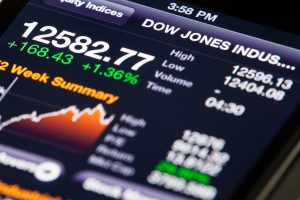 Technical analysis is a base barometer for many traders, and rightly so as technical indicators can help you reach higher profits. Although it has evolved into its own field, it remains anchored in Dow Theory. If you’re a trader who is serious about understanding the fundamentals of what you’re doing in order to deepen your understanding of technical analysis, you must get to grips with the theory first postulated by Charles Dow, one of the fathers of the Dow Jones Industrial Average Index. Here are the basic pillars.
Technical analysis is a base barometer for many traders, and rightly so as technical indicators can help you reach higher profits. Although it has evolved into its own field, it remains anchored in Dow Theory. If you’re a trader who is serious about understanding the fundamentals of what you’re doing in order to deepen your understanding of technical analysis, you must get to grips with the theory first postulated by Charles Dow, one of the fathers of the Dow Jones Industrial Average Index. Here are the basic pillars.
Everything is already factored into the price
The central concept here is that the market is not dumb. Any circumstances that could affect the price, such as social or political change, psychological factors or economic data, has already been factored into the price.
A trio of trends informs the market
Trends can be short, long or intermediate in terms of how long they last. They are nothing more than the general direction in which a market is moving. There are three of them to keep in mind:
Three phases characterize market trends:
Volume must confirm the trend
Dow’s position was that volume should grow in the direction of the main trend. If the trend is upward, the volume should grow, along with an increase in price. The volume will expand with a fall in price if the market goes down.
A trend remains in place until there is a reversal
Dow says that a trend remains in place until a reversal is clear, and not before then. An upward trend forms when every peak and low is higher than before, while a downward trend has decreasing peaks and dips. The logic behind this says that an obvious sign of an impending reversal is when a lower minimum within an upward movement forms. When there is a downward trend, the opposite is true.
Today, Dow theory still has a huge influence on technical analysis. It also still has an effect on general market theory and Elliott Wave Theory draws on Dow Theory. As a result, it can be argued that at its heart, Dow theory remains as relevant as it’s ever been.